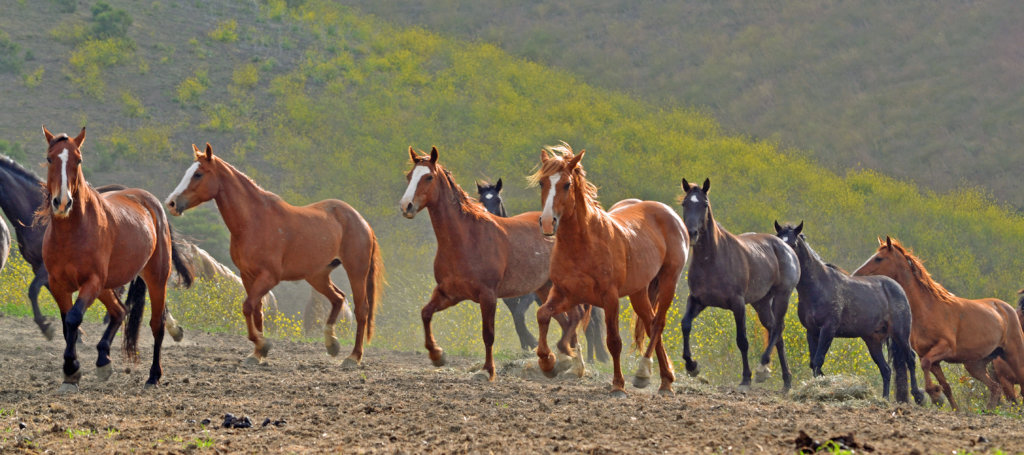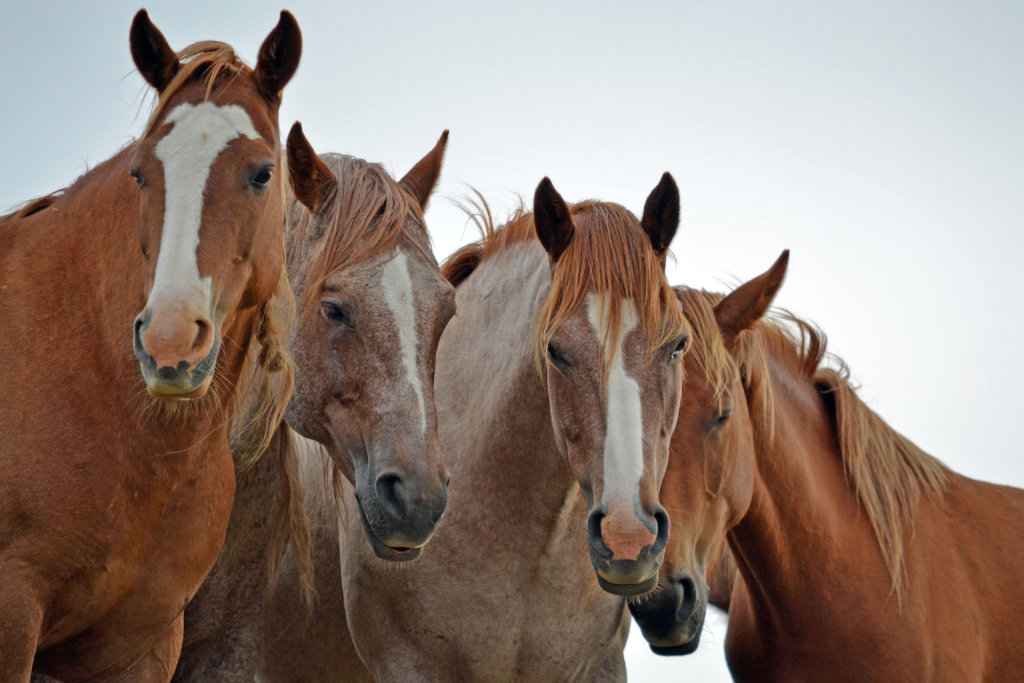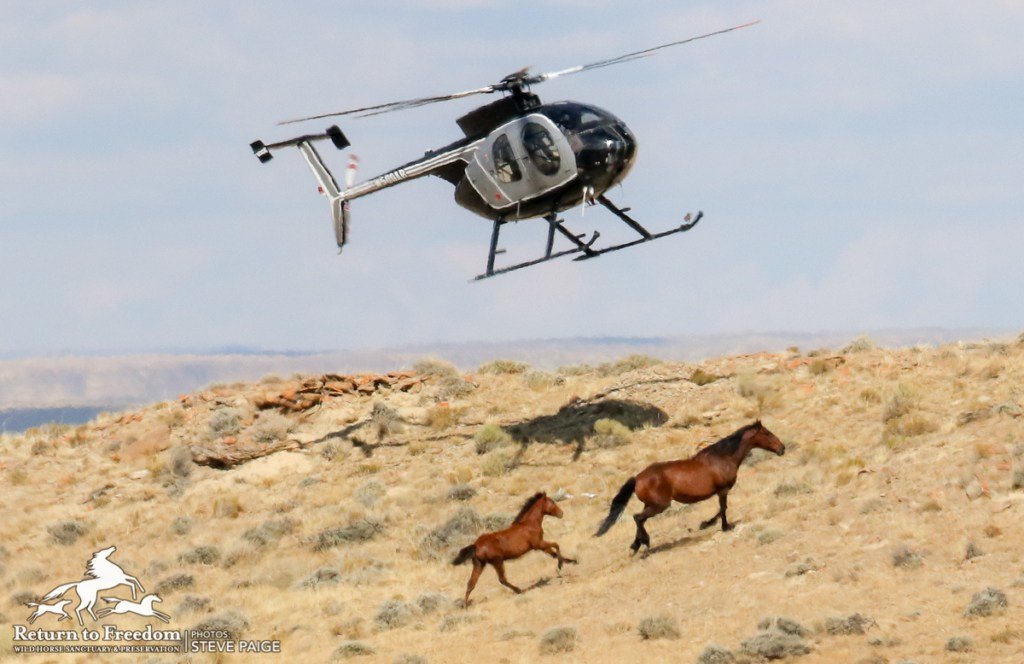By RTF Team | Coast to Coast
RTF works every day to change the way wild horses and burros are managed on our public lands. Roundups not only shatter horse families forever, they threaten the very future of wild horses on the Western landscape.
We work toward this in a number of ways, both in the halls of government and by outreach and education to the public to engage them in this advocacy as well.
In Congress—On March 23, the President signed a $1.3 trillion FY18 spending package that maintained long-standing language prohibiting the Bureau of Land Management (BLM) from killing healthy wild horses and burros and barring the U.S. Department of Agriculture from hiring horse meat inspectors, effectively banning horse slaughter as Congress has done every year except for one since 2005.
This positive result for horses, wild and domestic, represented the culmination of a year’s effort on the part of RTF and other horse and animal welfare advocacy groups and their supporters. Unfortunately, the reprieves expire with the end of fiscal year 2018, in less than five months’ time, so there is much more work to be done.
Congressional committees also demanded that the BLM produce a multi-pronged plan for wild horse and burro management within 30 days. Congress also requested a long-term plan last year, but BLM failed to produce one.
RTF submitted a plan of its own with coalitions partners in October 2017, and it will be watching closely to see whether BLM moves toward humane, on-range management and away from capture and warehousing equines and pressing to use “all tools available” (shorthand for euthanasia).
RTF also continues to support the bipartisan Horse Transportation Act of 2017, introduced Oct. 12 by Reps. Steve Cohen, D-TN, and Walter B. Jones, R-NC. The bill, HR 4040, would prohibit interstate transportation of horses in a motor vehicle containing two or more levels stacked on top of one another. It has amassed 49 co-sponsors.
Lobbying —RTF lobbyist Chris Heyde continued holding meetings and communicating with Congressional staff – including staff for House Speaker Ryan, Minority Leader Pelosi, Senate Majority Leader McConnell and Minority Leader Schumer. Heyde urged members of both houses to signal their support for the Senate version of the Interior Appropriations bill language continuing protections for wild horses and the Senate's FY18 Agriculture Appropriations language defunding horse slaughter inspections for another year.
On behalf of RTF—and our supporters—Heyde also began working on sign-on letters for the FY19 appropriations on horse slaughter defund efforts. In all, 134 House members signed onto a bipartisan letter calling for defunding horse slaughter by not including funding for horse meat inspectors. Though it’s unlikely that the defund language will be included in the initial language from the House Agriculture Appropriations Subcommittee, the letter – the largest to date – sends a message that many members support defunding horse slaughter.
E-communications—To engage and inform the public, RTF sent 19 electronic messages to supporters during the quarter. These included newsletters, action alerts, webinar/event invitations, and thank-you messages for participation.
Social Media —RTF uses social media to keep supporters of wild horses and burros up-to-date. On Facebook, from Jan. 1-March 31, RTF reached 1,027,680 users. On Twitter, during the quarter, RTF attracted 302 new followers, increasing its total followers to 3,054.
Roundups Continue—Although there has been some use of the population-control techniques advocated by RTF, roundups continue to threaten our wild horses.
During a heartbreaking, 22-day helicopter roundup ending Feb. 21, the Bureau of Land Management captured 1,388 wild horses on the 1.7-million-acre Triple B complex in Nevada. Thirty horses died — most put down for what BLM said were chronic conditions or pre-existing injuries. The agency released just 62 of the horses back onto their home range, a small fraction of the 250 studs and 250 mares it said that it would release before the roundup began. Of the 62 released, 32 were mares (28 were treated with PZP birth control), 27 were stallions, and 3 were foals.
Despite its massive size, the Triple B roundup isn’t the largest that BLM has planned for 2018. It has announced plans to capture and remove 2,670 wild horses from the Red Desert complex in Wyoming, starting later this summer. The five Herd Management Areas that make up the Red Desert complex total about 753,000 acres of public and private land, yet BLM has set the “Appropriate Management Level” there at 480-724 wild horses — or no more than one wild horse for every 1,040 acres.
One planned roundup is particularly troubling—BLM has proposed doing spay research on mares captured during an October roundup at the Warm Springs HMA in Oregon. BLM aims to determine the feasibility of performing ovariectomies.
This is a rare procedure which removes the ovaries by crushing and pulling them out with a looped-chain medical instrument called an ecraseur. This procedure opens the mares up to serious risk from infection, evisceration (should intestines come through the incision), and hemorrhaging.
There is a high frequency of post-operative complications affiliated with this surgery, some of which can be life-threatening. Most domestic horses upon which this surgery is performed are hospitalized for 3 to 7 days and quite carefully monitored post-operatively for signs of hemorrhage. The wild horses will not have this protection.
Return to Freedom will continue to advocate for the type of minimally-invasive management practices developed successfully at our own American Wild Horse Sanctuary over the past 20 years. We do so only with the support of many people who feel as we do about these important symbols of freedom.
Links:
Project reports on GlobalGiving are posted directly to globalgiving.org by Project Leaders as they are completed, generally every 3-4 months. To protect the integrity of these documents, GlobalGiving does not alter them; therefore you may find some language or formatting issues.
If you donate to this project or have donated to this project, you can receive an email when this project posts a report. You can also subscribe for reports without donating.


